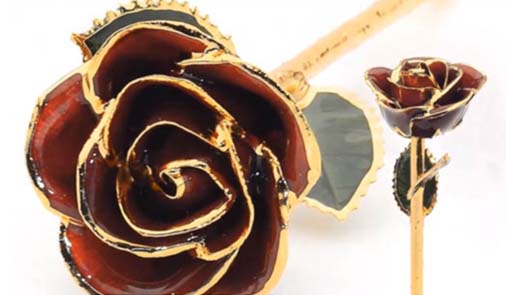
The many forms of art
There is no fixed rule that determines what exactly is an art form. There are many different new forms of art for you to explore.
Learn moreHere's how art has changed over the time.
The earliest
origins of art date back to 30,000 BC during the Stone Age. Cave paintings from that era have been found and appreciated in the modern era,
with some of the best-known pieces of that time being the Lascaux Cave which is found in southwest France. In recent times, a huge amount of
effort has been put into restoring the symbols and paintings of humans and animals which were originally rendered using mineral pigments.
These very early cave paintings were designed to tell stories of everyday life and still stand today as a valuable use of art through history.
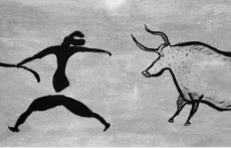
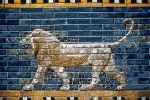 During the period
from 3500 BC to 538 BC, the Babylonian, Akkadian, Assyrian and Sumerian cultures all produced their own early art. These thriving empires produced
numerous impressive narrative reliefs and stone sculptures some of which have survived to the present time.
During the period
from 3500 BC to 538 BC, the Babylonian, Akkadian, Assyrian and Sumerian cultures all produced their own early art. These thriving empires produced
numerous impressive narrative reliefs and stone sculptures some of which have survived to the present time.
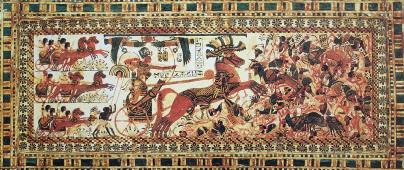 Between 3100
BC and 30 BC, the ancient Egyptians were producing some seriously impressive statues and wall paintings including hieroglyphics which are
still much admired today. We need only think of the Sphinx to see how much we still admire these ancient monoliths of ancient culture.
Between 3100
BC and 30 BC, the ancient Egyptians were producing some seriously impressive statues and wall paintings including hieroglyphics which are
still much admired today. We need only think of the Sphinx to see how much we still admire these ancient monoliths of ancient culture.
Roman architecture still stands in places like Bath where we can still see the original Roman Baths in all their former glory and in Rome where the Pantheon and Colosseum still stand as a testament to the skill of the ancient Roman artists. There are, however, many other impressive examples of art from this era. We need only look to the mosaics which survive in Pompeii to see the intricacy and attention to detail which was key in Roman art and there are still remaining rare examples of art paintings and friezes from this period of history which are preserved to this very day.
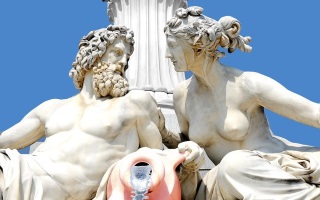 Early Greek
art represents a period of perfection and idealism. Between 850 and 31 BC, the Hellenistic period reflects this strive for perfection in its
sculptures and architecture. We need only look at the Parthenon, an impressive temple to Athena which still stands in Athens today to see the
attention to detail and the famous Greek columns which were created at this time. Greek art also encompassed beautifully formed statues which
celebrated the male and female form in all its true realism.
Early Greek
art represents a period of perfection and idealism. Between 850 and 31 BC, the Hellenistic period reflects this strive for perfection in its
sculptures and architecture. We need only look at the Parthenon, an impressive temple to Athena which still stands in Athens today to see the
attention to detail and the famous Greek columns which were created at this time. Greek art also encompassed beautifully formed statues which
celebrated the male and female form in all its true realism.
Between 500 and 1400 AD, the era of Gothic and Celtic art flourished. In the west, we see intricate structures and cathedrals such as Paris’ Notre Dame. At this time, the crusades took place and many people died due to the Black Death. These grim themes are reflected in the religious, looming and dark nature of the art of this time.
The rebirth of art took place between 1400 and 1550. This movement saw a cultural resurgence of intellect, literature and art once the period of war, disease and darkness had passed. Many schools of science, music and philosophy thrived at this time, however the art world benefited most of all with great painters and sculptors like Leonardo da Vince, Michelangelo and Donatello living at this time.
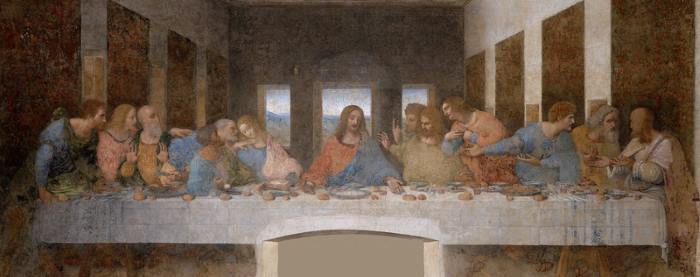 Spreading
through the whole of Europe at this time,
the Renaissance art movement is still much appreciated and loved today, and many of the world's most
famous and popular paintings date from this time. The main focus of Renaissance art was an enhanced version of realism. Rather than the rather
flat and one-dimensional images we saw in earlier eras, the art of the 15th and early 16th centuries was more realistic and based on the real
human form. Faces and figures took on a more three-dimensional look and paint colors also took on a realistic hue. Paintings like the Mona Lisa
were made at this time, while Michelangelo's David is one of the best-known sculptures of the day.
Spreading
through the whole of Europe at this time,
the Renaissance art movement is still much appreciated and loved today, and many of the world's most
famous and popular paintings date from this time. The main focus of Renaissance art was an enhanced version of realism. Rather than the rather
flat and one-dimensional images we saw in earlier eras, the art of the 15th and early 16th centuries was more realistic and based on the real
human form. Faces and figures took on a more three-dimensional look and paint colors also took on a realistic hue. Paintings like the Mona Lisa
were made at this time, while Michelangelo's David is one of the best-known sculptures of the day.
During the period 1600 to 1750, the art world went through a movement known as The Baroque movement. This era was a very religious one, overlapping the 30 years war which took place between the Catholics and Protestants.
The culture of the day pervaded art of the time, and famous artists such as Caravaggio and Rembrandt who did their best work at this time were famous for the dramatic, moody and tense style of their paintings which came through in the subject matter and lighting techniques. Meanwhile, in the world of architecture art, amazingly ornate structures like the Palace of Versailles were designed and constructed.
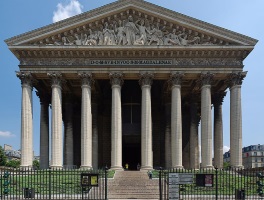 During
the period between 1750 and 1850, the Neoclassical era came into being. At this time, the Baroque period’s extremity was toned down, yet the
Greco-Roman periods of art were also beautifully captured in all its aesthetic and graceful perfection.
During
the period between 1750 and 1850, the Neoclassical era came into being. At this time, the Baroque period’s extremity was toned down, yet the
Greco-Roman periods of art were also beautifully captured in all its aesthetic and graceful perfection.
At this time, the Age of Enlightenment and the Industrial Revolution saw a greater interest in science as opposed to the religious themes which had so far pervaded the art world. As a result, Jean August Dominique Ingres and Jacques Louis David found their artistic style came to the fore.
From the end of the 18th century to the middle of the 19th century, Romanticism took off in a big way. While eras which had gone by had seen art embracing both the scientific and the religious, the Romanticism movement saw the emphasis being placed instead on the self.
The Enlightenment's sense of order was rejected in favor of this era's more chaotic way of approaching life. At this time, the French and American revolutions took place, and moody, dark works defined the artistic landscape. Artists like Gericault, Turner and Delacroix made their names at this time.
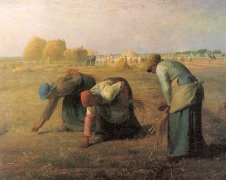 Between the middle of the 19th century and the turn of the 20th century, the exaggerated grandeur, emotion and drama of
the Realism movement
were rejected in favor of realism. A grounded approach was preferred and melodrama had had its day.
Between the middle of the 19th century and the turn of the 20th century, the exaggerated grandeur, emotion and drama of
the Realism movement
were rejected in favor of realism. A grounded approach was preferred and melodrama had had its day.
Instead, the lives of common people and the working class were portrayed on canvas and in sculpture, with views of the everyday struggle and experience of the working man and woman being shown in all their glory. Millet and Courbet were two of the best-known painters of this time to take this unique approach to art.
Even if you talk to someone who knows very little about art, they will no doubt have heard about impressionism. Encompassing a very brief period of just twenty years between 1865 and 1885, the Impressionist period focused on capturing visual phenomena rather than simply religious or political ones.
The impressionist philosophy of art rejected older fashioned techniques which dictated order and form, instead of allowing artists to paint freely as they desired. As a result, their works centered around impressions of people and scenes. Some of the best-known artists of this time include Manet and Monet, with watercolors being especially popular to capture the surreal style of the time.
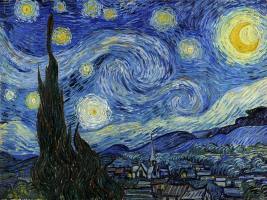 During a period of around 3 decades between 1885 and 1910, the post-impressionism period in art had its day. The logical follower to
impressionism, the post-impressionist era still rejected the traditional rules of art and its drive for perfectionism, but at the same time,
rejected the supposed limitations.
During a period of around 3 decades between 1885 and 1910, the post-impressionism period in art had its day. The logical follower to
impressionism, the post-impressionist era still rejected the traditional rules of art and its drive for perfectionism, but at the same time,
rejected the supposed limitations.
This new art style continued permitted a complete freedom of brush technique and style but, in a twist, applied this freedom to common scenes, with a move towards painting forms instead of only impressions. Rousseau, Van Gogh and Toulouse-Lautrec were three of the most famous Post-Impressionist painters of them all.
Fauvism and its relative Expressionism were primarily the product of war. Flourishing during the period of World War I and its immediate aftermath, these artistic styles were characterized by bold shapes, harsh colors and emotionally disturbing content. Edvard Munch's works like The Scream are classics of this era.
While Expressionism was in full flow during the early years of the 20th century, a second series of art forms were running parallel to it. Futurism, Cubism, Constructivism and Supremativism were a diverse collection of artistic styles which explored expressionistic style. Artists were no longer encouraged to capture realism in images of scenery or individual people.
Instead, abstract objects, landscapes and shapes were deconstructed and portrayed in unusual ways as a way of expressing the artist’s own emotions. This era saw a move away from traditional techniques and with artists like Picasso excelling at this time, art went through a very bold period.
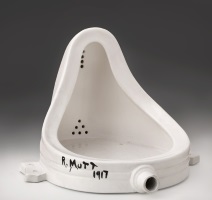 Extending from 1917 up to 1950, the Surrealism and Dada movement saw a rejection of traditional art forms. Many pieces of this time embraced
absurdism, with dream-like elements and subconscious themes being explored. Wartime horrors were often depicted, with Dadaist followers
subverting the classical idea of expression and questioning the meaning of art itself.
Extending from 1917 up to 1950, the Surrealism and Dada movement saw a rejection of traditional art forms. Many pieces of this time embraced
absurdism, with dream-like elements and subconscious themes being explored. Wartime horrors were often depicted, with Dadaist followers
subverting the classical idea of expression and questioning the meaning of art itself.
One particularly notable piece from this era is "Fountain" by Marcel Duchamp which was merely a urinal which was found, signed by the artist and then entered to an exhibition. Some of the best known surrealist painters include Magritte and Dali.
A lot of art which falls into the postmodern category involves deconstructing the past’s artistic styles then reinterpreting them. Today’s artists have a greater freedom than ever before to draw from the past, present and even the future when creating their new works. Anything goes in today’s artistic world. We need only to look at examples such as Tracey Emin’s “Bed” to see that almost anything can be considered to be a work of art as long as the intention behind it is to promote thought.
Whatever type of art you prefer, as a lover of the medium it’s important to understand the progression of artistic styles and to embrace the desire of artists through the ages to express themselves and the environment around them through the style which comes most readily to them. Perhaps you love to create your own art, or perhaps you prefer to appreciate it at a distance. Whichever you prefer, this guide to artistic styles will help you to understand more about styles through the ages.

There is no fixed rule that determines what exactly is an art form. There are many different new forms of art for you to explore.
Learn more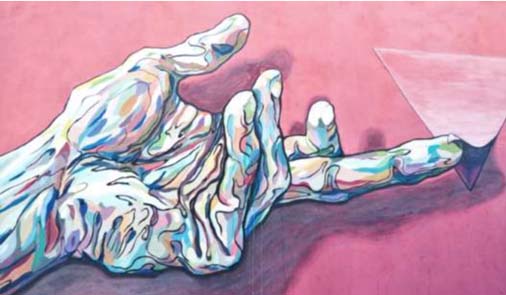
What one art lover enjoys, another will dislike intensely. That’s the nature of art. Different artists interpret the meaning of the word in different ways.
Learn more